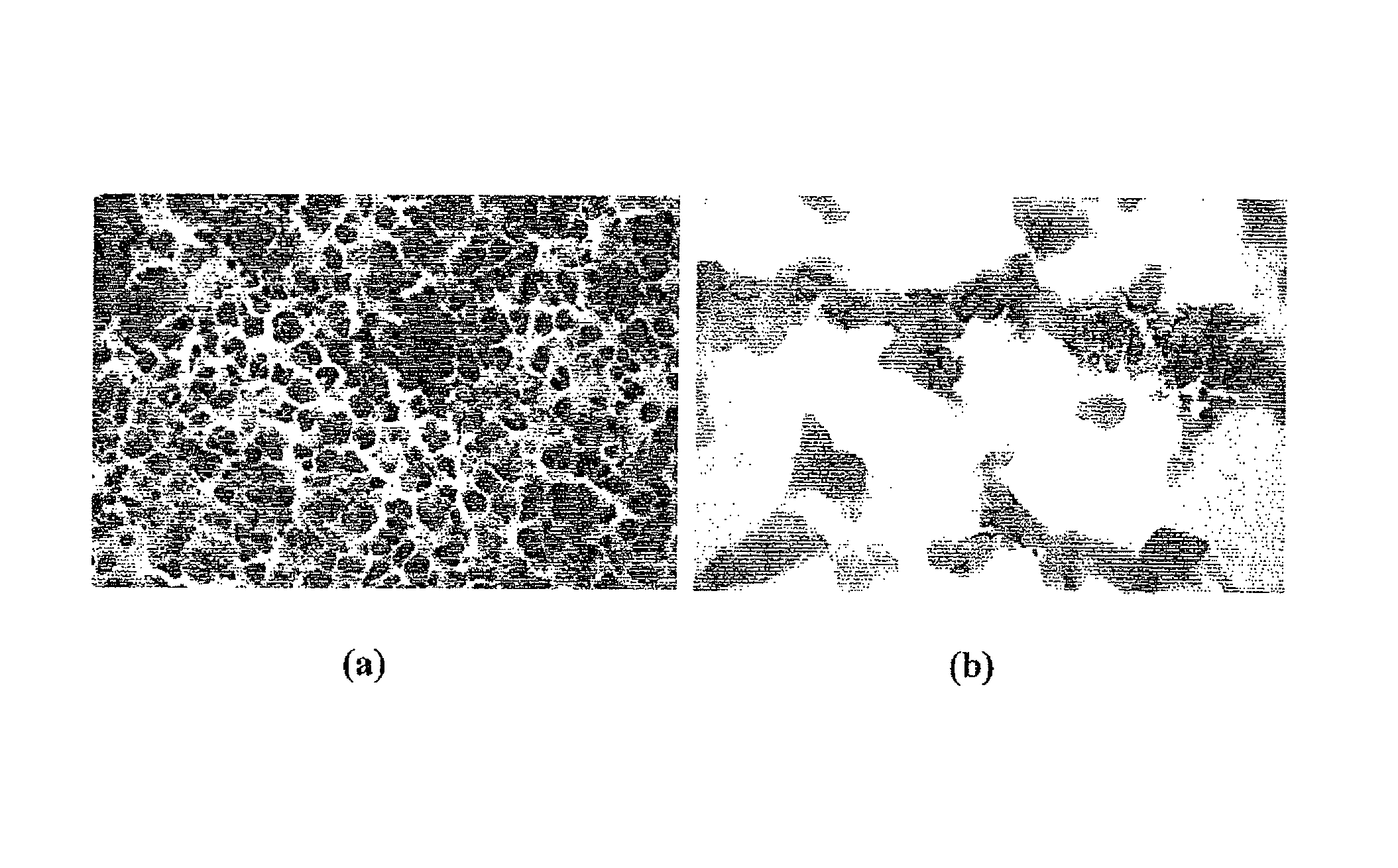Chitosan composition
a polysaccharide gel and composition technology, applied in the direction of in-vivo radioactive preparations, powder delivery, granular delivery, etc., can solve the problems of immunogenic molecules not generating the level of immunity desired, high cost of therapy, and compromise of biodegradability, so as to achieve an unspecifically correlated immune response
- Summary
- Abstract
- Description
- Claims
- Application Information
AI Technical Summary
Benefits of technology
Problems solved by technology
Method used
Image
Examples
example 1
[0095]Chitosan (1.11 g, degree of N-deacetylation 50%, MW 145 kD) was suspended in 70 mL distilled water and 2M HCl (aq) was added dropwise in order to dissolve the chitosan. The pH of the solution was adjusted to 7.4 with 1M sodium hydroxide. The volume was adjusted to 100 mL with distilled water. 3,4-Diethoxy-3-cyclobutene-1,2-dione (122 μL of a 20% (v / v) solution in ethanol) was added and the solution was stirred for 3 h. The pH of the solution was adjusted to 8.3 and the volume was adjusted to 111 mL. The solution was placed in a heating cabinet at 40° C. for 3 days. The solidified gel was designated as 1-1. The procedure was repeated but no 3,4-diethoxy-3-cyclobutene-1,2-dione was added. This gel was designated as 1-2.
example 2
[0096]Chitosan (0.50 g, degree of N-deacetylation 72%, MW 145 kD) was suspended in 35 mL distilled water and 2M HCl (aq) was added dropwise in order to dissolve the chitosan. The pH of the solution was adjusted to 6.2 with 1M sodium hydroxide. The volume was adjusted to 50 mL with distilled water. This gel was designated as 2-1. To 20 mL of the above solution was added 3,4-diethoxy-3-cyclobutene-1,2-dione (40 μL of a 12% (v / v) solution in ethanol) was added and the solution was vigorously stirred for 10 minutes. The pH of the solution was adjusted to 7.5. The solution was placed in a heating cabinet at 40° C. for 3 days. The solidified gel was designated as 2-2.
example 3
[0097]Chitosan (0.50 g, degree of N-deacetylation 72%, MW 145 kD) was cross-linked with glutaraldehyde (6 g) in 50 mL 1M HOAc (aq) at 100° C. The reaction conditions were as described in J. Control. Release 111 (2006), 281-289.
PUM
| Property | Measurement | Unit |
|---|---|---|
| weight average molecular weight | aaaaa | aaaaa |
| molecular weight | aaaaa | aaaaa |
| molecular weight | aaaaa | aaaaa |
Abstract
Description
Claims
Application Information
 Login to View More
Login to View More - R&D
- Intellectual Property
- Life Sciences
- Materials
- Tech Scout
- Unparalleled Data Quality
- Higher Quality Content
- 60% Fewer Hallucinations
Browse by: Latest US Patents, China's latest patents, Technical Efficacy Thesaurus, Application Domain, Technology Topic, Popular Technical Reports.
© 2025 PatSnap. All rights reserved.Legal|Privacy policy|Modern Slavery Act Transparency Statement|Sitemap|About US| Contact US: help@patsnap.com

